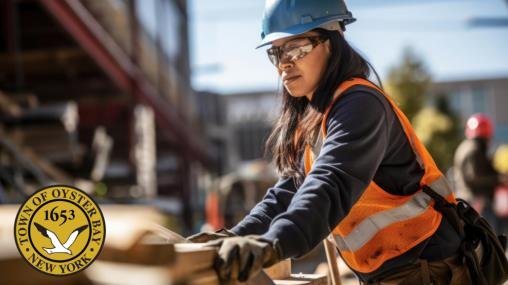Vocational education has emerged as a significant force in shaping the workforce across various industries. As academic degrees continue to dominate discussions about career preparation, vocational education provides an equally valuable pathway for individuals who prefer a hands-on approach to learning. But what is vocational education, and why is it so important today? In this blog post, we’ll delve deep into the meaning of vocational education, its advantages, challenges, and how it plays a pivotal role in modern career development.
Defining Vocational Education
To understand vocational education, starting with a clear definition is crucial. Vocational education, sometimes called career or technical education (CTE), equips students with practical skills and knowledge related to specific trades or professions. Unlike traditional academic education, which emphasizes theoretical knowledge, vocational education is centered on practical, job-specific training. Students in vocational education programs learn skills tailored to industries like healthcare, automotive repair, culinary arts, information technology, and more. The primary goal of vocational education is to prepare individuals for direct entry into the workforce.
The History of Vocational Education
Understanding the roots of vocational education helps us appreciate its role today. Historically, vocational education can be traced back to the apprenticeship model, where young individuals learned trades by working alongside experienced artisans. As industrialization grew in the 19th and 20th centuries, the need for a skilled workforce became apparent, leading to the development of formal vocational education institutions. Today, vocational education continues to evolve, with programs that range from traditional trades to high-tech sectors, illustrating how the field adapts to meet the changing demands of the job market.
The Structure of Vocational Education Programs
Vocational education programs vary in length and depth, depending on the field and the expertise required. Typically, vocational education can be offered at secondary schools, postsecondary institutions like community colleges, or through specialized trade schools. These programs are often shorter than traditional degree programs and focus intensively on the specific skills needed for a profession. Vocational education may include hands-on workshops, internships, and real-world projects to ensure students are prepared to enter the workforce upon completion. Furthermore, many programs offer certificates or diplomas that signify the student’s readiness for employment in their chosen field.
Benefits of Vocational Educations
One of the primary benefits of vocational educations is its practical focus. Students acquire skills directly applicable to the job they want to pursue. Unlike traditional academic paths, where graduates may spend years learning general subjects, vocational educations allows students to enter the workforce quickly with specialized skills. Moreover, vocational educations can often be more affordable than four-year degree programs, making it an attractive option for individuals seeking to avoid student debt. Vocational educations also caters to diverse learning styles, particularly those who thrive in hands-on, applied learning environments.
Vocational Education’s vs. Traditional
The distinction between vocational education’s and traditional academic educations is a crucial point of discussion. Traditional educations often emphasizes critical thinking, research, and broad-based learning across various subjects. In contrast, vocational educations focuses on job-specific skills and practical knowledge. While traditional education prepares students for different career options, vocational educations is ideal for those who know the specific trade or profession they wish to pursue. Vocational educations also prioritizes experiential learning, allowing students to apply their knowledge in real-world settings rather than theoretical frameworks.
Vocational Education and Job Market Demand
As the job market evolves, vocational education continues to adapt to meet the needs of various industries. Many countries have a growing demand for skilled workers in healthcare, construction, and technology fields. Vocational education is crucial in filling these gaps by producing graduates ready to enter these high-demand professions. Additionally, as industries become more technologically advanced, vocational education programs increasingly integrate modern technologies and tools into their curriculums. This ensures that students gain relevant skills and are equipped to adapt to future changes in their respective fields.
Vocational Education’s Significance in Economic Development
Vocationa’l education benefits individuals and the broader economy. A well-trained, skilled workforce is essential for economic growth, particularly in industries that rely heavily on specialized knowledge. Vocationa’l education helps bridge the gap between labor market needs and workforce skills, reducing unemployment rates and boosting productivity. Moreover, vocationa’l education encourages entrepreneurship by giving individuals the skills to start their businesses in construction, automotive repair, or culinary arts. In this way, vocational education’s contributes to personal and national economic development.
Vocationa’l Education for Non-Traditional Students
While vocationa’l education has traditionally been associated with high school students or young adults, it is also increasingly appealing to non-traditional students. Adults looking to switch careers, individuals re-entering the workforce, and those seeking new skills to enhance their current employment prospects all benefit from vocationa’l education. Many vocationa’l education programs offer flexible learning options, such as part-time classes or online courses, making it easier for non-traditional students to balance education with other responsibilities. This flexibility ensures that vocationa’l education remains accessible to a broad spectrum of learners.
Challenges Facing Vocationa’l Education
Despite its many advantages, vocationa’l education faces several challenges. One major issue is its stigma, as vocationa’l education is often seen as less prestigious than a traditional college degree. This perception can discourage students from pursuing vocationa’l education, even if it aligns with their career goals. Additionally, funding for vocationa’l education programs can be limited, making it difficult for institutions to offer up-to-date equipment or facilities. To overcome these challenges, governments and industry leaders must work together to promote the value of vocationa’l education and ensure it receives the necessary support.
The Future of Vocationa’l Education
As technology continues to evolve and the demand for skilled labor grows, the future of vocationa’l education looks promising. Many experts predict that vocationa’l education will play an increasingly vital role in preparing workers for the jobs of tomorrow. Fields such as renewable energy, advanced manufacturing, and healthcare are expected to grow significantly, and vocationa’l education will be vital in supplying the skilled labor needed for these industries. Additionally, the rise of online and remote learning platforms will make vocationa’l education even more accessible, allowing students worldwide to gain the skills they need for success.
Conclusion
In conclusion, vocationa’l education is a critical pathway for individuals seeking practical, job-specific skills that lead directly to employment. Whether someone is pursuing a career in healthcare, technology, or a traditional trade, vocationa’l education offers valuable opportunities for learning and professional growth. By focusing on hands-on training and experiential learning, vocationa’l education prepares students for the demands of the modern workforce. As industries continue to evolve and the need for skilled labor increases, vocationa’l education will undoubtedly play a central role in shaping the future of work.




